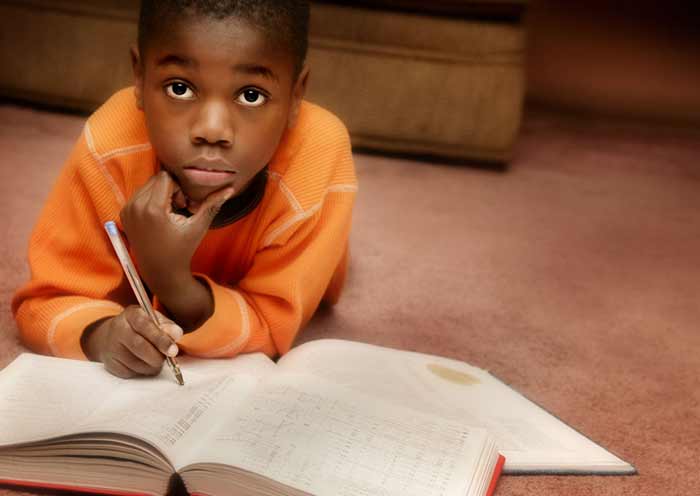Education
Don’t Let Closed Schools Impede Learning

by Margo McKenzie
Although schools are closed, a loss of classroom time does not have to equate with a loss of learning.
With talk of the coronavirus over the last few weeks, and the prospect of school closure looming, proactive schools/teachers may have provided their students with instructional materials and/or access to learning platforms such as Google Classroom, etc.
For students who need at-home instructional support, this column provides a list of free, mostly internet-based resources. Two are television-based.
If carefully structured, this time away from the school building can serve as an opportunity for students to make educational gains and enrich their lives. What follows is a list of suggestions to keep the minds of our youth engaged, their knowledge deepened and their intellect sharp.
Set the Tone for Home-Learning
Set aside dedicated, instructional space away from noise, interruptions, and movement.
Work together with your child to establish a learning schedule; post and consult often. (See sample below.*)
Consider naming the learning time after the child’s last name, such as the Johnson Academy (“Academy”). When the “Academy” is in session, the television and phone are off unless used as instructional tools.
Typical tools for instruction: notebooks, pens, pencils.
As an introduction to the “Academy,” consider a lesson on coronavirus. A few websites provide a wealth of resources:
Center for Disease Control (CDC) for articles, flyers and maps. https://www.cdc.gov/).
The Learning Network” of The New York Times provides a comprehensive learning site on a variety of subjects with articles, charts, and graphs about the outbreak. (https://nyti.ms/33iBOzg)
“Just for Kids: A Comic Exploring the New Coronavirus,” Malaka Gharib, NPR. (February 28, 2020). (https://n.pr/3d5KBcq)
*Johnson Academy Learning
Schedule
8-8:30 Breakfast
8:30-9:15 Math
9:15-9:30 Learning journal
and Reflections
9:30-10:15 Reading
10:15-10:30 Reading Log and
Reflections.
10:30-10:45 Break
10:45-11:30 Science
11:30-12:30 Lunch
12:30- 1:15 History/Current
Events
1:15- 1:30 Reading Log and
Reflections
1:30-2:15 Writing
2:15-3:00 Art
Track Learning Experiences
- Keep a daily record of learning topics and skills.
- Maintain reflection logs where children write about how their feelings/thoughts approaching a task and how they felt/thought after completing it.
- Save all written work to share with their teacher when they return to school
Additional Resources:
Free On-Line Sources (for Students Without Copies of School Curricula and Corresponding Books and Materials)
WNET Education stimulates learning of skills and values through videos and projects. (PBS, Channel 13, 6 am-3:30 pm). PreK-12
Scholastic Learn at Home with their science-based website about animals, plants, the moon, and spring. (https://bit.ly/33lKJ2S). Grades K-12
PBS Kids posts interactive storybooks, games and TV schedules f(or the local PBS station). For an extra fee, they provide an app for STEM activities. (https://to.pbs.org/3cZk5RK). Pre-K-6
Nano Wrimo Young Writer’s Program. Provides Common Core Standards-based lessons that prepare students to write a novel in one month. (https://bit.ly/2vZNyun). PreK-12
Khan Academy provides instructional videos in math, reading, and more with short assessments and immediate feedback. (https://bit.ly/2Ud4zJk). Prek-12
“Highlights for High School” offers free advanced mini-courses by MIT (Massachusetts Institute of Technology) students. https://bit.ly/2wYF1I3
Alison Courses offers hundreds of courses in nine different categories: Science, Humanities, Math, Marketing and more (https://alison.com/courses/science)
News Channels (great for taking notes, highlighting main ideas, drawing conclusions and more)
“The View” ABC, 11am
“You Decide with Errol Lewis,” engages in insightful interviews, New York1, 7 pm.
“Dr. Oz”
“PBS Newshour”
Virtual Museum Tours:
Smithsonian Museum “Family Interactives” provides images and activity ideas
(https://www.nga.gov/)
MetKids highlights artifacts from antiquity to today from around the world accompanied by discover, imagine and create suggestions to support the creation of art. (https://bit.ly/2QkSTDe)
Family Projects:
Recommendation: Plant-Based Cooking.Together with your child, list the types of plants one can grow at home (tomatoes, basil, mint, etc.). Make a dish, such as salsa or a smoothie with one or more of the ingredients.
Make connections to:
Science: Physical structure of the tomato and nutritional components. History: How and where the tomato originated Writing: Write the auto/biography of the life a tomato from plant to plate and beyond.
Art: Imbed the image of a sliced tomato in a drawing entitled “How Many Tomatoes Can You Find?”
Enjoy Learning With Your Child!


